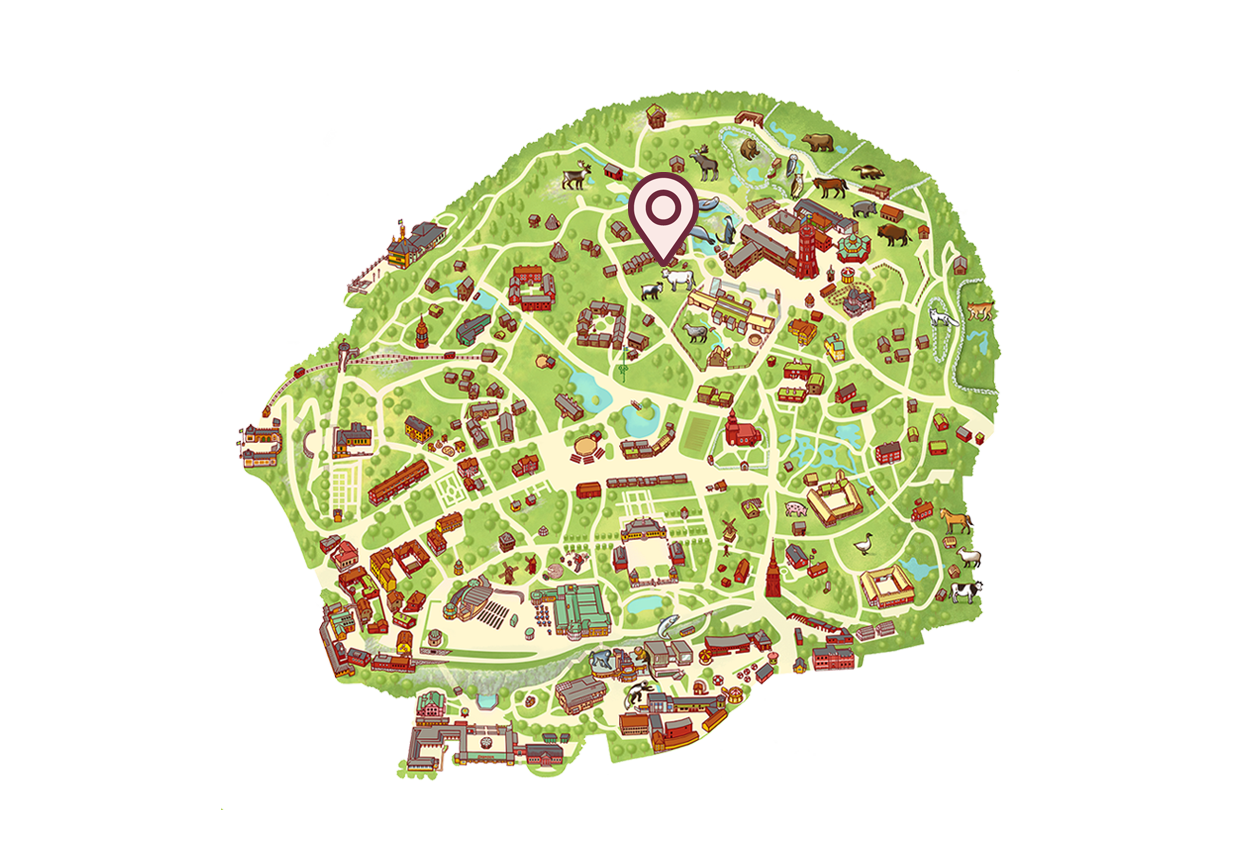- Jämtland goat
Jämtland goat
The goat was once often known as ‘the poor man’s cow’. However, in contrast to cows, it can survive in meagre conditions.
-
The Jämtland goat is an ancient native breed that has adapted to pasturing and milk production in a northerly climate. It was once common in Jämtland and Härjedalen in particular. It is a light goat with a small body mass, and is an excellent feed converter. It provides milk and cheese. The milk is rich in protein with a high fat content, and can be drunk by those who cannot tolerate cow’s milk.
-
About the Jämtland goat
Scientific name:Capra hircus
Order:Even-toed ungulates
Family:Hollow-horned animals
Weight:Nanny goats 25–30 kg, bucks 50–60 kg
Sexual maturity:6 months
Breeding season:July to December
Gestation:5 months
Number of young:1–2 kids, sometimes 3
Lifespan:6–12 years
Eats:Bushes, leaves, branches and berries
-
A small goat with a narrow head
The Jämtland goat is small, slender and fine-limbed, with a narrow, fine head. It is white with brown, grey or black markings. It may have a dark dorsal stripe and dark markings on its legs, ears and face. It can also be brown, ruddy-coloured, or black and white. Both nanny goats (females) and bucks (males) have horns. The male’s horns can be a metre long.
Able to survive on poor soil
The goat is a ruminant that eats bushes and coarse grass, and can survive on poor soil. It is primarily an animal that provides milk for drinking, and even more often for cheese-making.
Originates from wild goats
The domestic goat is descended from the Capra aegagrus bezoar ibex, small populations of which are still found in the wild around the Mediterranean and in the region from Turkey to Pakistan. The ‘Kri-Kri’ Cretan wild goat is also often mentioned as an ancestor, but is probably a domestic goat that has run wild.
The oldest reliable archaeological goat find comes from southwest Iran, and is about 9,500 years old. The goat first came to Sweden during the Neolithic period. The oldest Swedish archaeological goat find is from Omberg in Östergötland, and has been dated to around 2100 BC.
Commonly domesticated in the past
The goat was a popular domesticated animal in the old Nordic countries. In the oldest Eddic poems, the goat is the most commonly mentioned animal after the horse. Towards the end of the Viking Age, goat farming fell into decline as sheep became more important. However, goat skins were still exported for making parchment and chamois leather.
There were many goats at the time of King Gustav Vasa. The king sent goatskins to Germany for tanning and dyeing, and for making clothes such as ‘hose’ (legwear). The nobility enjoyed goat meat as a delicacy, but the goat was most important to peasants. According to an ancient proverb, the goat is ‘the poor man’s cow’. A goat could be kept in very limited circumstances, but keeping a cow was an impossibility.
Ragg socks, parchment and coin pouches
Goats provided milk, cheese, meat and leather. The ragg yarn could be mixed with equal parts of wool and used to knit ragg socks and mittens. The stomach could be used to make parchment for the window panes of the time, and could also be used as the body of a bagpipe or to store liquids in. The horns and bones were used to make small items, and the scrotum was used as a coin pouch.
In the 18th century, the goat was a common domesticated animal throughout Sweden, but during the 19th century goats declined due to fencing and grazing regulations.
Conservation work
Today’s Jämtland goats are directly descended from the old native breed without crossbreeding, and can be considered uncultivated. They come from two unrelated Jämtland herds with their roots in the old Swedish native breed goat. In 1991, Skansen and Fredriksdal Open Air Museum took over the strain. The Allmogegeten Association was founded in 1993, and its work includes preserving the Jämtland goat.
-
Goat milk and urine in folk medicine
It was once believed that having a nanny goat and a buck in the barn and regularly drinking goat’s milk would avoid tuberculosis. Goat’s milk and urine were also used in folk medicine.
-
Native breeds
Native breeds are populations of domesticated animals that have lived for so long in the same area that they have adapted to the local environment and its specific conditions. Swedish native breeds have declined in number, but there is a growing focus on efforts to preserve them as they are an important genetic resource and part of our cultural heritage.
Find out more about Swedish native breeds here.
You can find the Jämtland goat here
